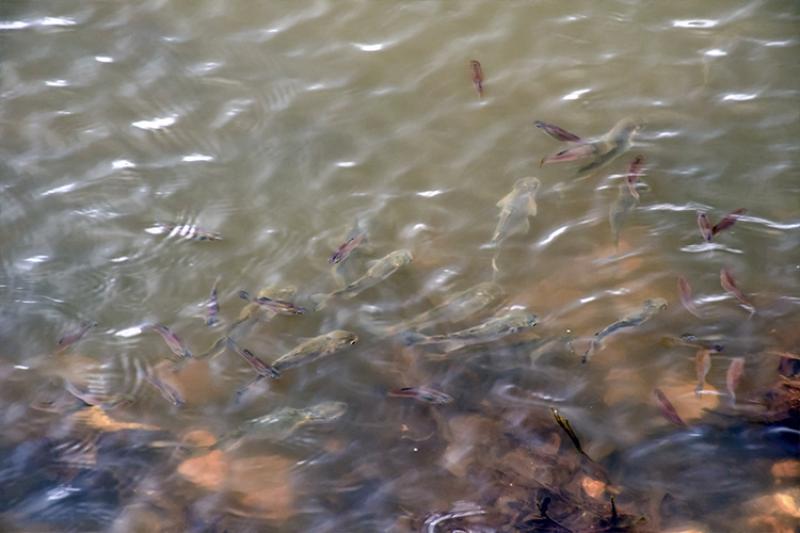The development of environmental acclimation-based rearing strategies to optimize survival and growth in amaʻama or striped mullet, Mugil cephalus
PRINCIPAL INVESTIGATOR: Andre Seale
Sea Grant Graduate Fellow: Reilly Merlo
Research Track: Aquaculture

Efforts to revitalize traditional Hawaiian fishponds aim to increase sustainable seafood production and reduce Hawaiʻi’s reliance on importation. However, fish production has encountered challenges. Natural recruitment of juvenile ʻamaʻama (striped mullet) to the fishponds has become unreliable, while the introduction of hatchery-raised fry directly into the fishponds has proven mostly unsuccessful, likely due to the fingerlings’ susceptibility to rapidly changing environmental conditions within the fishponds, including temperature and salinity. Therefore, this project aims to establish strategies to adjust the fingerling hatchery environment to precondition the ʻamaʻama, improve their environmental tolerance, and optimize their survival and growth once introduced to the Hawaiian fishpond setting.
The research will focus on the effects of variable salinity and temperature regimes on physiological markers of growth, stress, and salt-water regulation in the fish, establishing which environmental conditions will best prepare the juvenile mullet for survival in the natural fishpond setting. In addition to improving management strategies for rearing the ʻamaʻama in fishponds, thereby increasing aquaculture productivity in the state, this research will also enhance understanding of the physiological mechanisms involved with environmental acclimation, providing further insight into how the native mullet may adapt to future changing climatic conditions.

